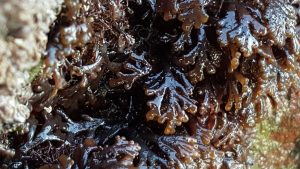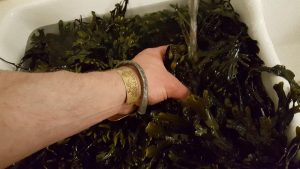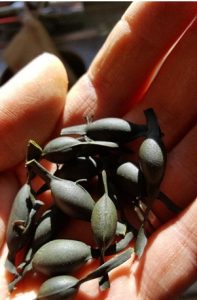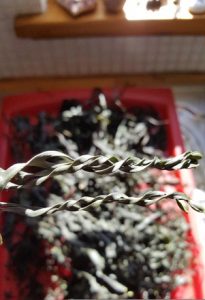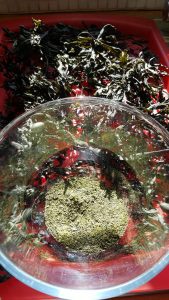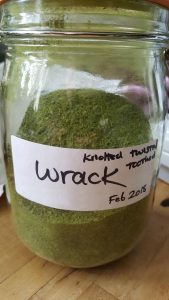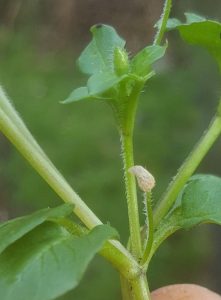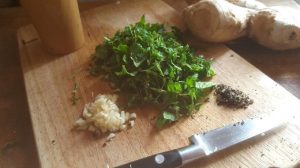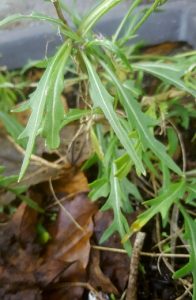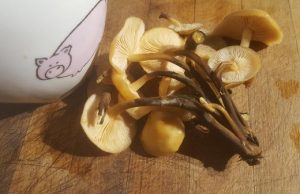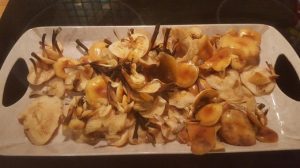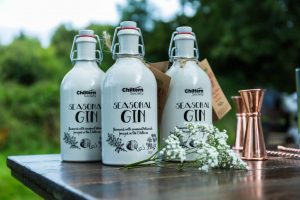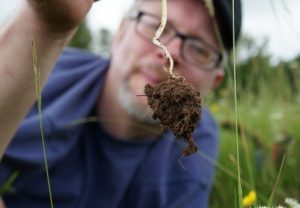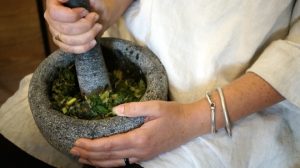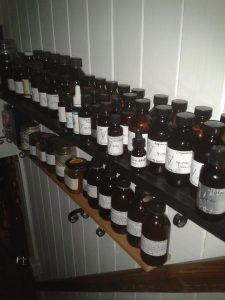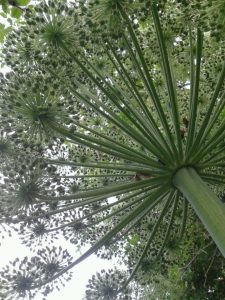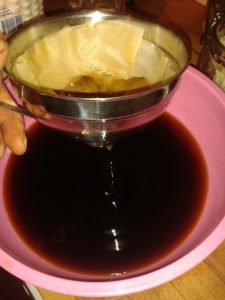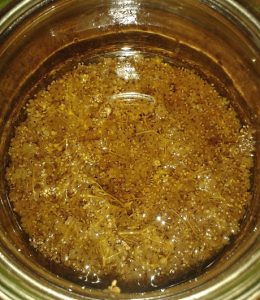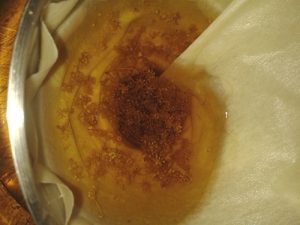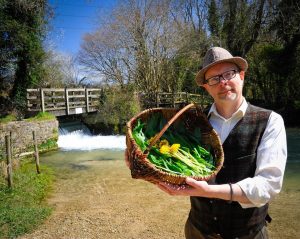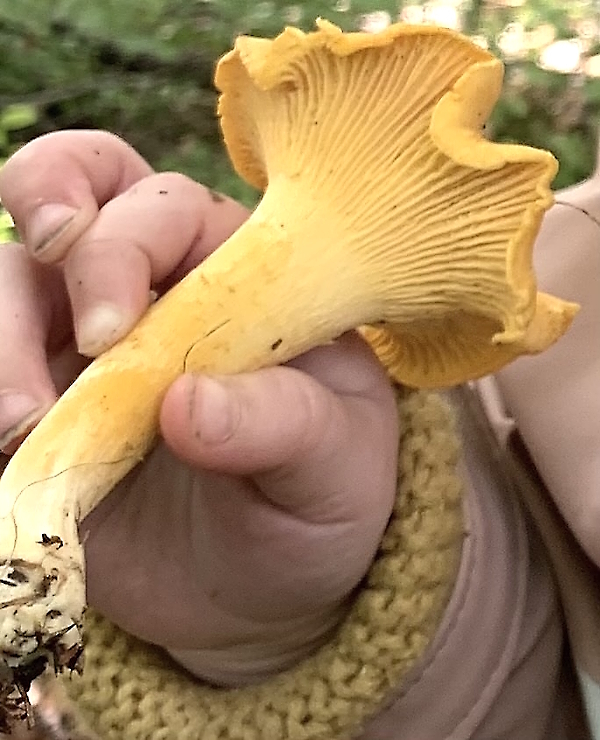
The golden yellow chanterelle or girolle, Cantharellus cibarius, is a prized edible species. It smells of apricots and has a slight peppery aftertaste that earns it the name of pfifferlinge, or ‘little pepper’, in Germany and Austria. Photo by Abumadsen
The autumn mushroom season is a thrilling time for foragers and culinary enthusiasts, but perhaps you are also in pursuit of that iconic fungal photograph, or to add rare and unusual species to your personal “spotted” list too… autumn rarely disappoints!
The best time to go searching can vary significantly based upon the species you are tracking down and by the habitat or location. It should be noted that there are mushrooms to be found throughout most of the year, with some, like morels and St. George’s mushroom, appearing in the spring, and when autumn turns to winter there are also a number of species, including some good edible ones. I wrote “The Ten Mushrooms of Winter” to help those who are brave and bold and go mushroom hunting in the depths of December or January to make some successful finds… but there can be no doubt, that by far the greatest number and diversity of fungi are to be found in the autumn, and so, with autumn nearly upon us, let’s get started!
Mushroom Season Overview
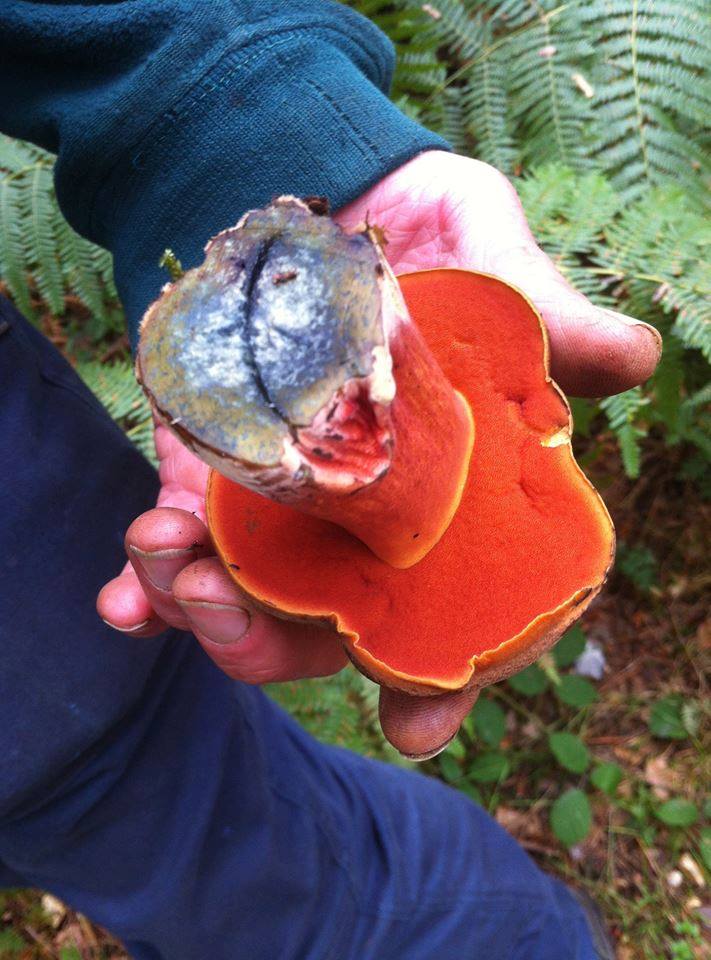
The scarletina bolete, Neoboletus praestigiator / luridiformis… these are its real colours (not photoshopped)… is a conditionally edible species because it must be thoroughly cooked. Photo by Em from The Secret Sunday Mushroom Club
Mushrooms are a beloved ingredient in countless dishes, yet their peak season varies by variety. Understanding when different mushrooms are in season can help chefs and nature photographers alike to plan their menus and fungus forays
Things typically start hotting up in late summer…
Especially in a damp August and rarely even from July, we often see the first flush of porcini, or penny bun, Boletus edulis, together with some other tasty early season boletes, such as the summer cep, Boletus reticulatus, the scarletina bolete, Neoboletus praestigiator / luridiformis, and the lurid bolete, Suilelus luridus.
Other typically summer-loving mushrooms, and also some species with very long fruiting seasons, may start putting in their first appearances in late May, June or July, including dryad’s saddle, Cerioporus squamosus, and chicken of the woods, Laetiporus sulphureus (which will also have a later fruiting). Chanterelle or girolle, Cantharellus cibarius, may not be exactly fruiting in abundance all over the forest floor at this point in the year, but they can certainly be found even at the height of summer with a diligent search of wooded streamsides, ditchsides and other damp places; many more will follow on later in the year.
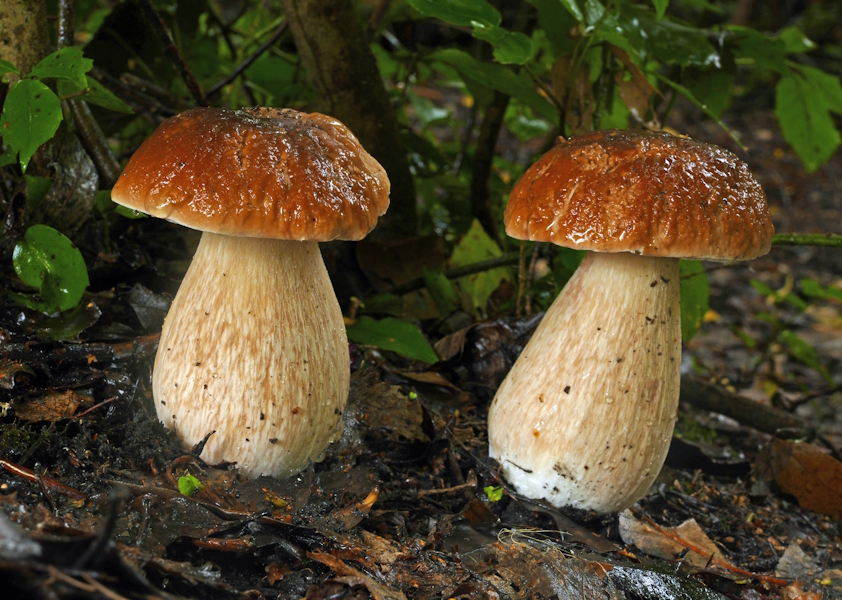
Prized in many different cultures around the world, the cep, penny bun or porcini mushroom, Boletus edulis, goes by many names. When young it is delicious sliced raw with a drizzle of lemon and salt. It cooks and preserves well and older specimens are used to make mushroom stock powder. It is also a rich source of the health-giving mushroom amino acid, ergothioneine. Photo by Bernard Spragg
Early autumn, usually sees the porcini, aka ceps or penny buns, coming in waves, fruiting under the tree species on which they depend, such as beech, oak and spruce, in flushes that are timed differently according to the dominant tree cover. Locally these fruitings can follow a distinctly predictable repeating sequence each year.
Make the most of seeing the wide variety of elegant and colourful boletes, including the porcini because they can be very common in a damp September, but they may become quite scarce as the autumn progresses, and vanishingly so during the second half of autumn, if it is a good year for slugs!
“Shhhh… It’s time for the Mycopause”
As early autumn brings its fruitful harvest of berries and mushrooms, the time of ‘seed harvest’ is upon us in the countryside each year, but soon these beautiful early season gems will spoil and fall to earth, beginning the next stage of their journey, along with the fall of the forest leaf canopy and the dying back of meadow grasses in the fields.
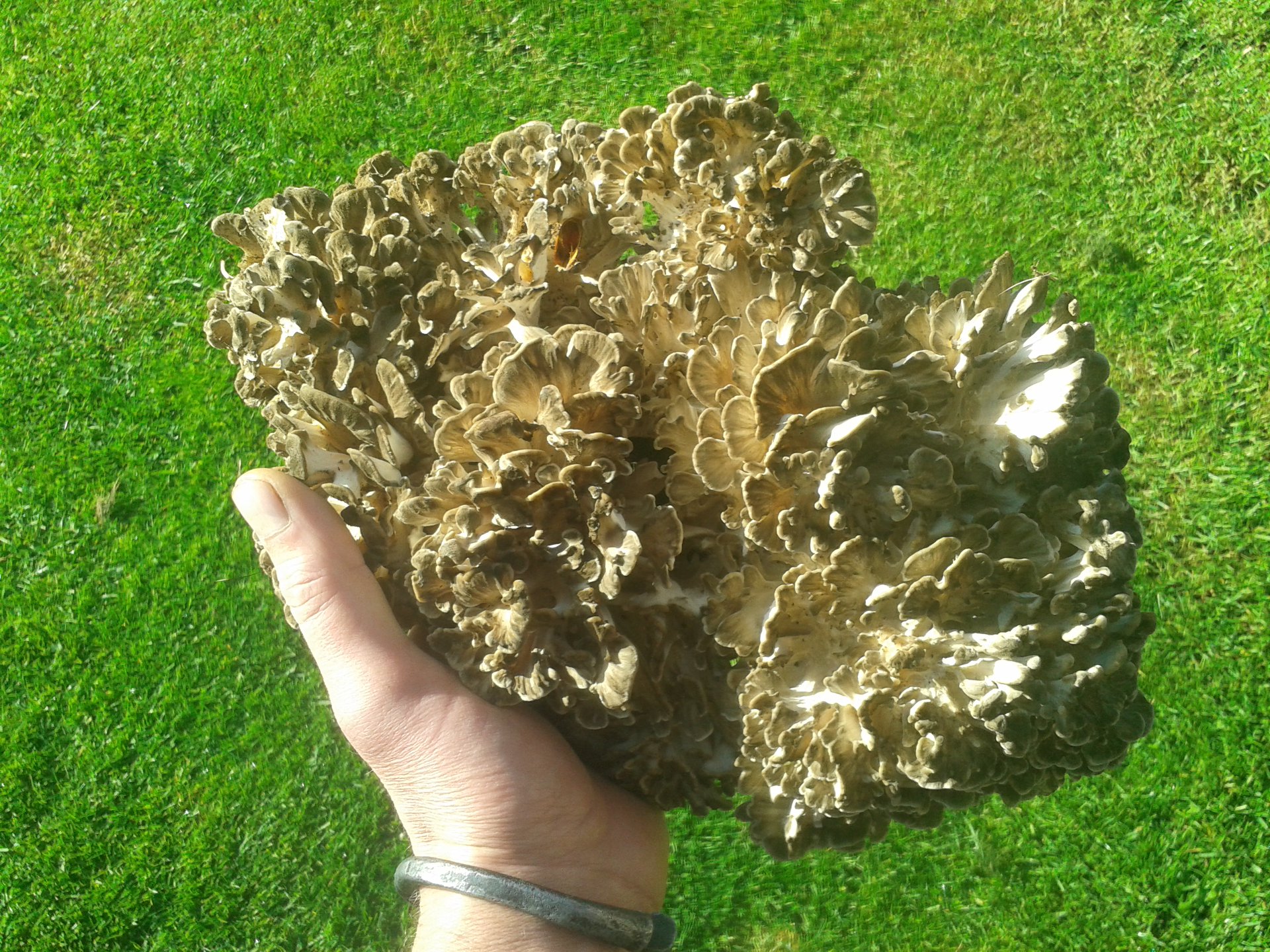
Hen of the woods, Grifola frondosa, aka the magnificent ‘maitake mushroom’, often puts in an appearance just before the end of the first autumn fruiting period. Photo by Fred Gillam
Hen of the woods, Grifola frondosa, aka the magnificent ‘maitake mushroom’, often puts in an appearance just before the end of this first autumn fruiting period, and soon after, there is often a gap in the appearance of fungi, perhaps for a week or even two. As well as being delicious, in medicine it is associated with hormonal health and in Japan is known and revered as The Dancing Lady.
It is as if the autumn is holding its’ breath now, waiting, while the old order is overthrown and a new heirarchy of species readies itself in private to establish a new royal court of the fungi. We have termed this quiet interval “The mycopause”.
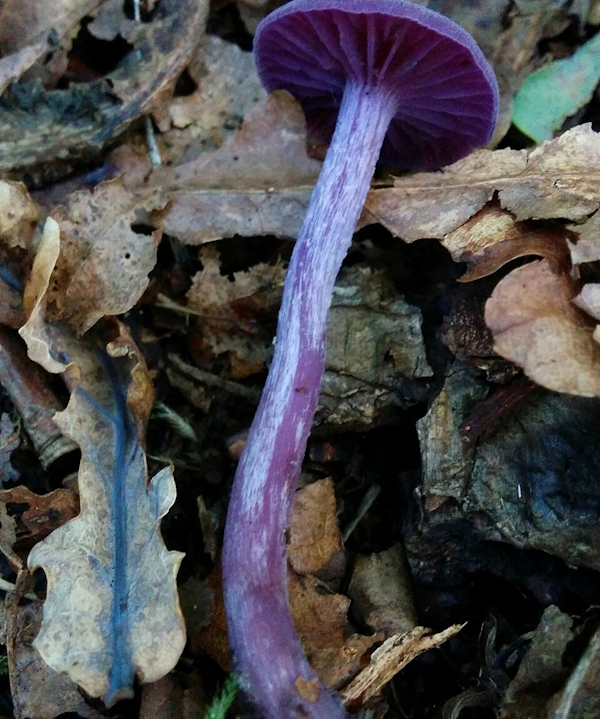
The first time that you see the amethyst deceiver, Laccaria amethystina, it will be indelibly written in your mind’s eye for the rest of your life. Deceptive yes, owing to the fact that it changes colour as it ages and dries out, but this is a tasty and very common species that should be eaten in moderation, as it can accumulate arsenic from natural sources. Photo by Arto_Kampainnen
Come late autumn, once the mycelium networks begin the lengthy process of digesting falling leaves and twigs, dead grasses and herbs, and fallen berries and seeds, they accumulate enough nutrition to fruit once more. This time though it is late autumn species that come to the fore. We see many ‘leaf-eaters’ such as blewits, trooping funnels, clouded agarics, and amethyst deceivers. Whilst there are many mycorrhizal species still fruiting, nature’s army of decomposers seizes control of the forest floor, and many of the species found now are non-mycorrhizal saprotrophs.
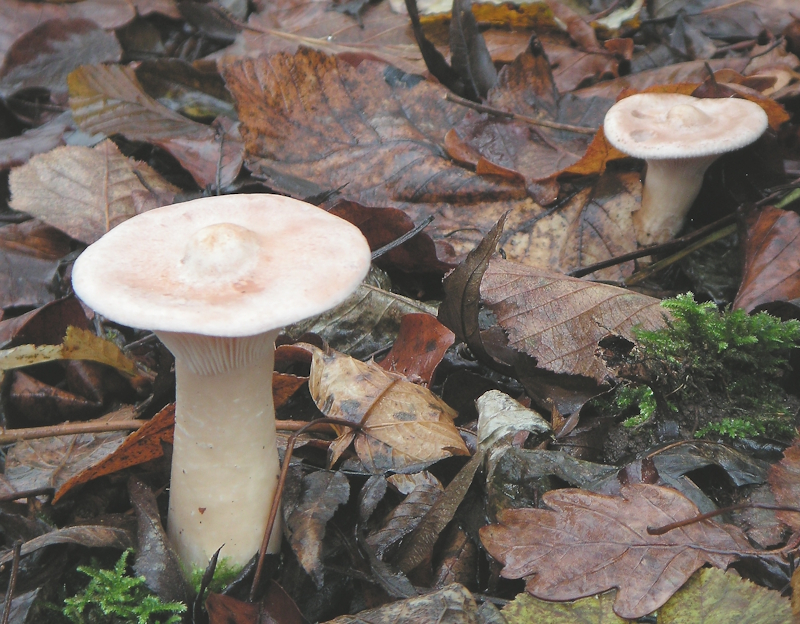
The trooping funnel, Infundibulicybe geotropa, is a mid to late season species that is a leaf-litter decomposer. It is also known a the monk’s head mushroom, owing to the bulge in the middle of the cap – in French “tete de moine”. It generally grows in fairy rings in the woods. Though a good edible species it does bear a passing resemblance to some more poisonous ones and must be identified with care. Photo by Charles Sommer
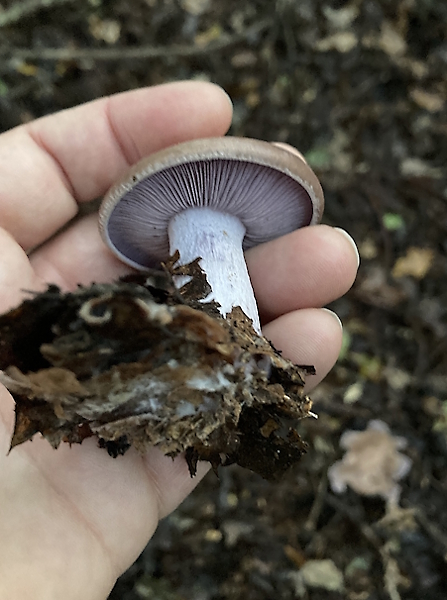
The wood blewit, Lepista / Collybia nuda, is a delicious late season edible mushroom that is a leaf-litter decomposer. It smells fragrant and a bit like orange juice! Blewits must be cooked properly or else they can result in a stomach upset. Photo by Empress_moth
Whilst it is true that there is a definite sequence to mushroom fruiting and many species are almost exclusively found at different points in the season, it is always worth going out… they don’t always seem to know the rules and definitely are making up some rules of their own!
A cautionary note…
If you are planning on gathering fungi for food, please never ever consume something unless you can confidently identify it as an edible species first! Although mushroom poisoning is comparatively rare, it can lead to an agonising and prolonged death and in some cases there are no known antidotes. It is far better to enlist the help of a seasoned expert who can teach you all the nuances of where to look, what to pick and how to avoid poisonous look-alikes, as well as giving your finds a look over.
 The death cap, Amanita phalloides, is perhaps the most iconic poisonous mushroom in the world. It has been responsible for many fatalities. There is no known antidote and it could take 2 weeks or more to die if accidentally ingested. Photo by Danny Cicchetti.
The death cap, Amanita phalloides, is perhaps the most iconic poisonous mushroom in the world. It has been responsible for many fatalities. There is no known antidote and it could take 2 weeks or more to die if accidentally ingested. Photo by Danny Cicchetti.
The funeral bell, Galerina marginata, pictured above, does what it says on the tin! Many little brown mushrooms – however pretty – are poisonous, beware! Photo by Andre de Kesel
Remember to only take fungi when the species you are gathering are abundant, and only ever take enough for personal use. Many tiny creatures depend on them for their nutrition and so do some larger ones! Nature’s harvest must be shared among all the animals of field and forest and whole life-cycles depend upon that; so if you intend to forage, that’s great providing you do so sustainably and with respect… please follow the Forager’s Code of Practice!
Want to learn from me this year? As well as being the author of Poisonous Plants in Great Britain, I have been studying fungi for more than 40 years and have taught thousands of people the basic skills of mushroom identification… Click here for more details…




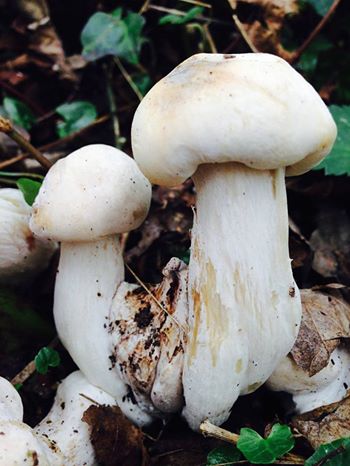
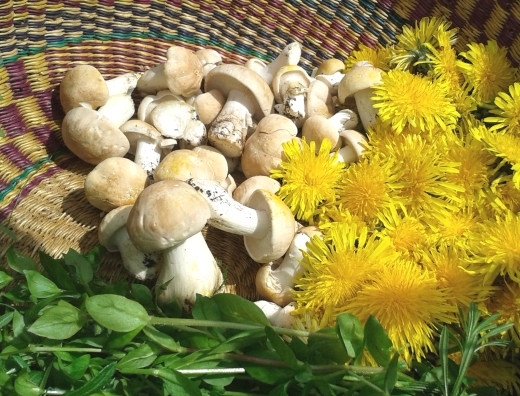
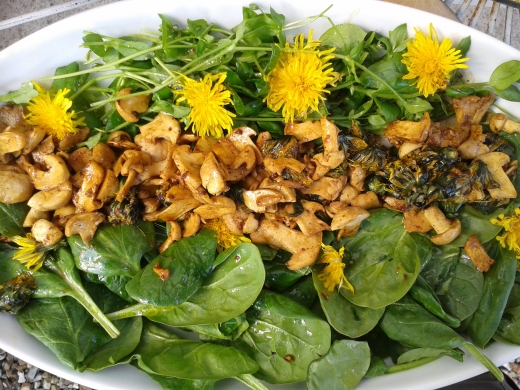
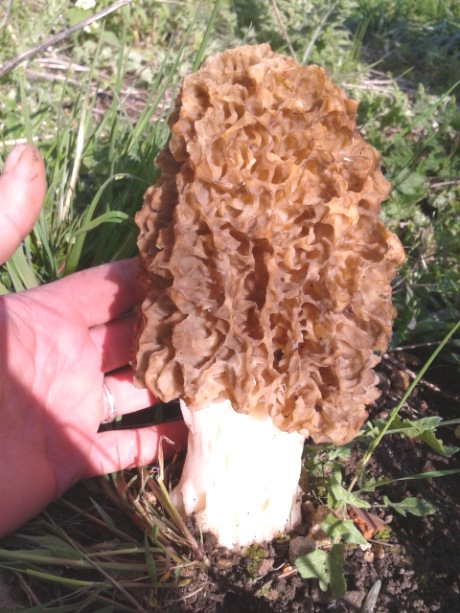
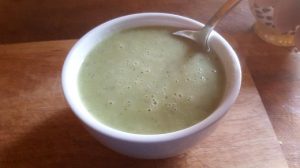 I have been taking people out to forage for spring cures for many years, and I look forward very much to making my own spring cure at this time. It is not essential to use all seven herbs, and substitutions can easily be made, but be sure to stick to stinging nettles for the base.
I have been taking people out to forage for spring cures for many years, and I look forward very much to making my own spring cure at this time. It is not essential to use all seven herbs, and substitutions can easily be made, but be sure to stick to stinging nettles for the base.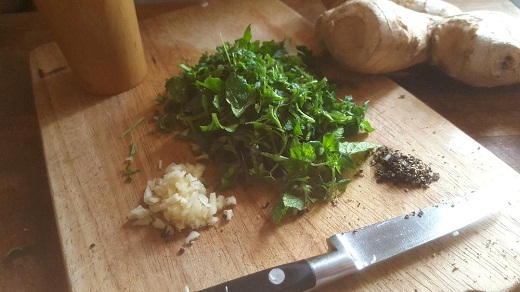
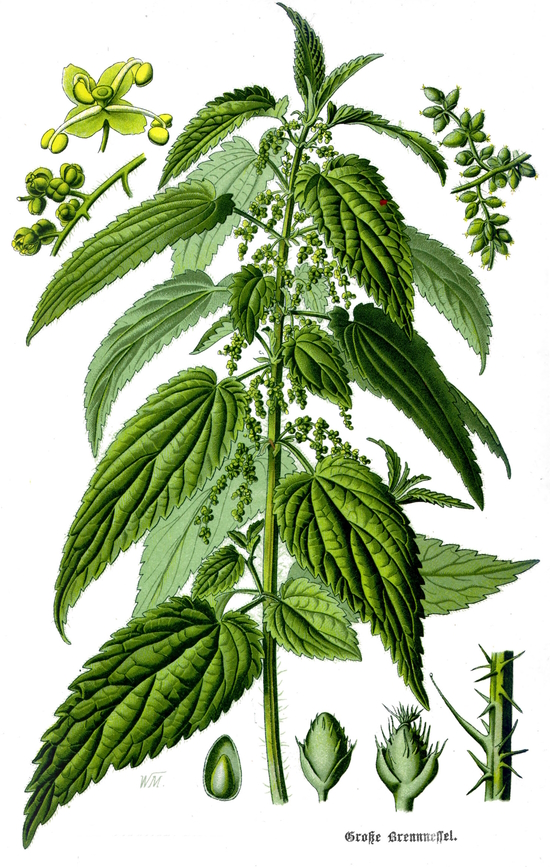
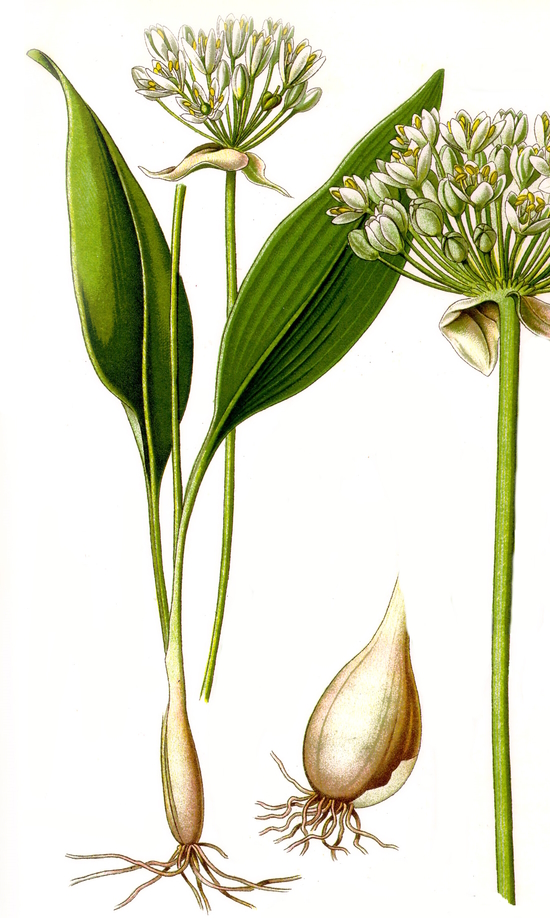
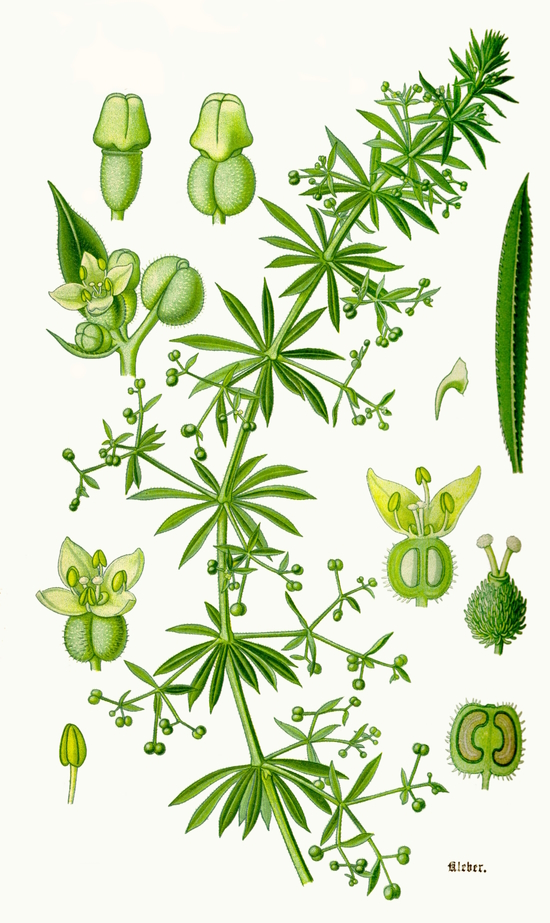 FEATURES: .
FEATURES: .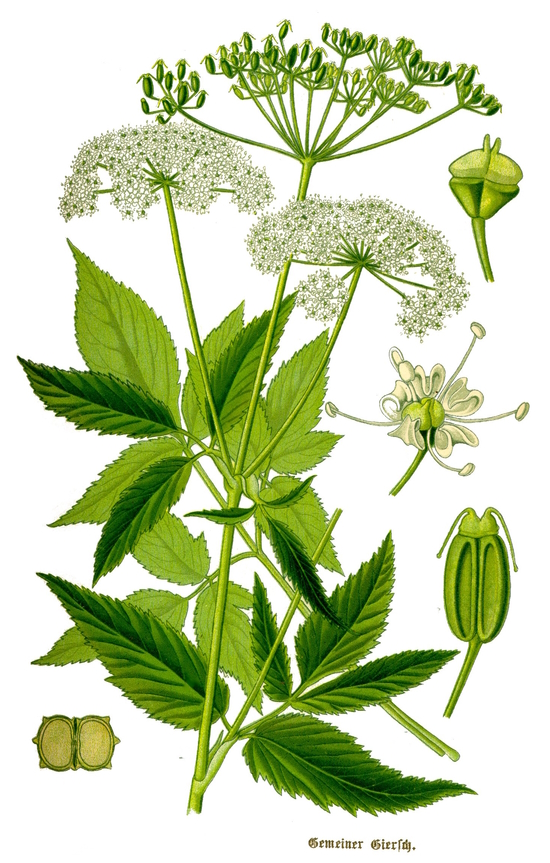 FEATURES: .
FEATURES: .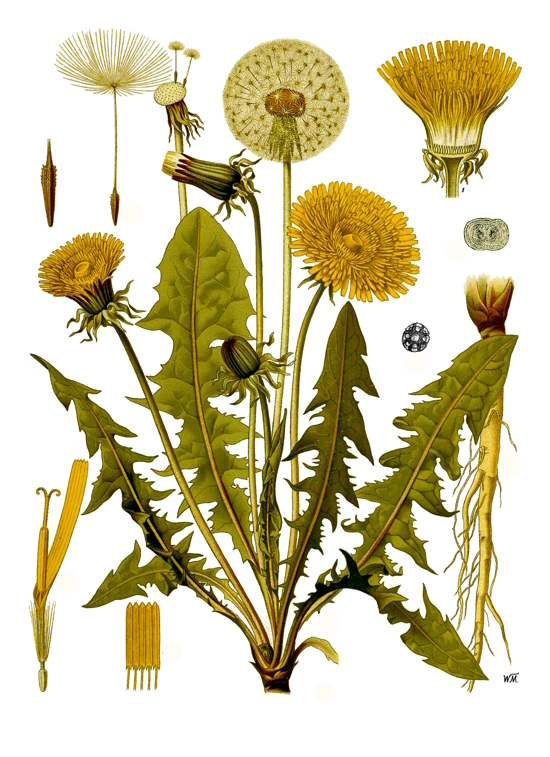
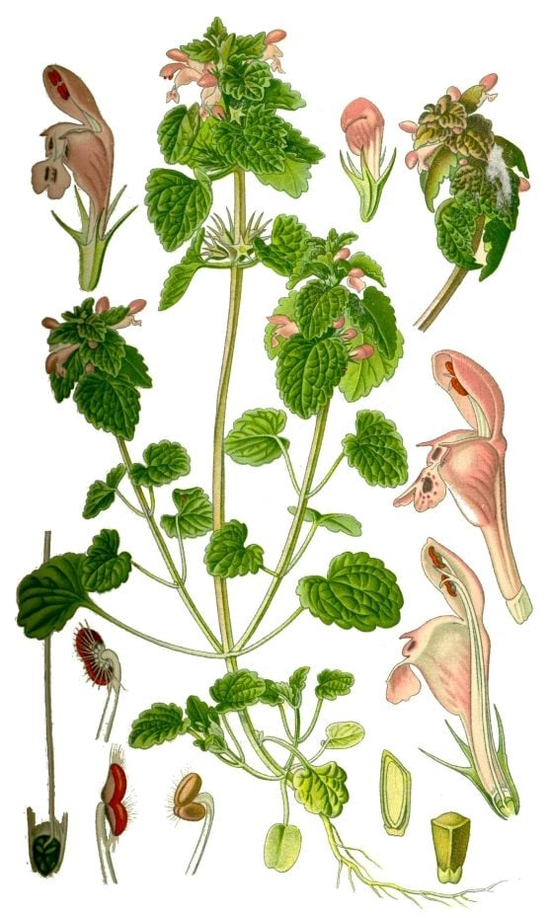
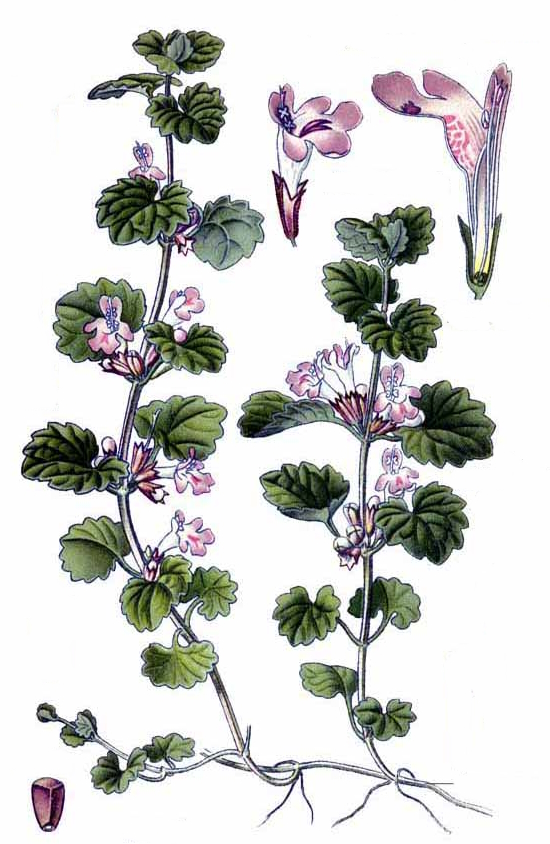
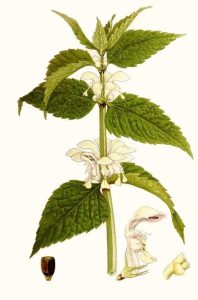
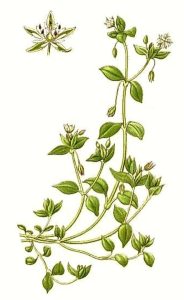
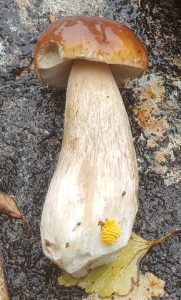
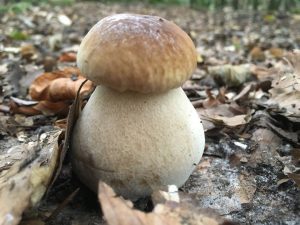 CAP: Yellowish brown to reddish brown… but predominantly brown, looking just like a bread bun on a short, swollen fat stick – hence the name ‘penny bun’. Often there is a paler margin around the edge.
CAP: Yellowish brown to reddish brown… but predominantly brown, looking just like a bread bun on a short, swollen fat stick – hence the name ‘penny bun’. Often there is a paler margin around the edge. 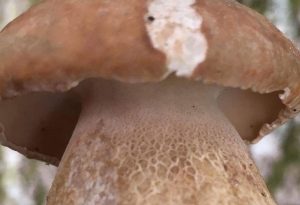 STEM: The stem of the cep can be very very fat indeed, often with more usable flesh in it than the cap itself! The upper stem surface is covered in a very fine, pale/white, raised fishing-net pattern or ‘reticulum’. This white fishing reticulum is a distinctive feature.
STEM: The stem of the cep can be very very fat indeed, often with more usable flesh in it than the cap itself! The upper stem surface is covered in a very fine, pale/white, raised fishing-net pattern or ‘reticulum’. This white fishing reticulum is a distinctive feature.

